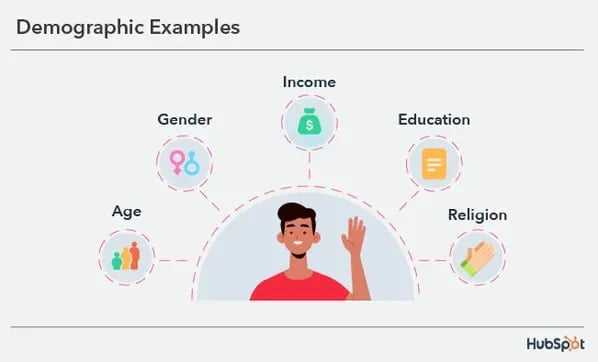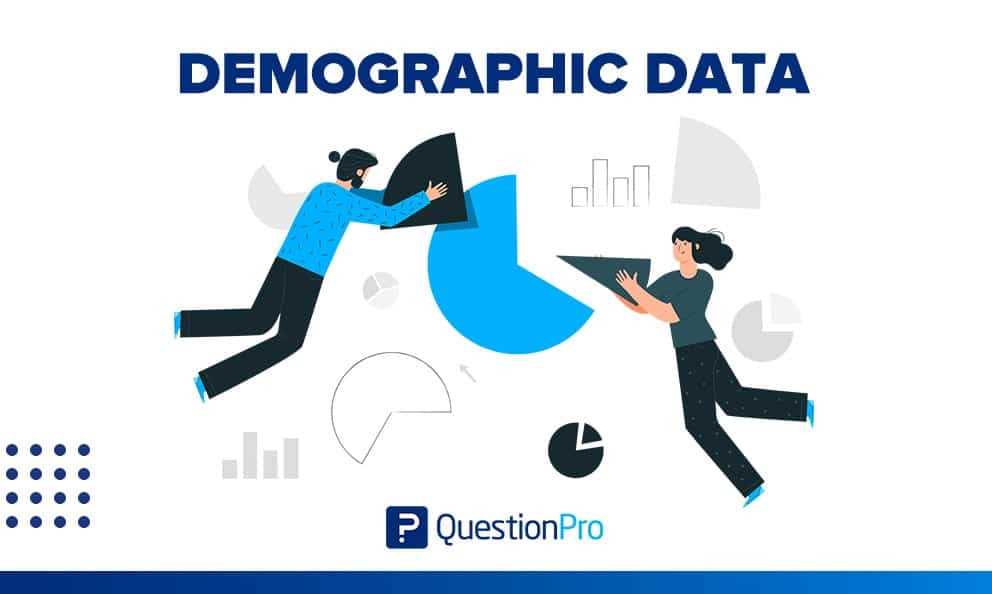Demographics: The Importance of Collecting and Analyzing Demographic Data
Demographic data refers to information about the characteristics of a population, such as age, gender, race, income, education level, and occupation. Collecting and analyzing demographic data is crucial for a variety of reasons, as it provides valuable insights that can inform decision-making processes in various fields, including economics, marketing, and public policy.
One of the primary reasons why collecting and analyzing demographic data is important is that it helps businesses and organizations understand their target audience better. By knowing the demographic composition of their customer base, companies can tailor their products, services, and marketing strategies to meet the specific needs and preferences of different demographic groups. For example, a clothing retailer can use demographic data to identify which age groups are most likely to purchase certain types of clothing, allowing them to stock their inventory accordingly and create targeted advertising campaigns.
Furthermore, demographic data plays a crucial role in identifying social and policy considerations. By analyzing demographic trends, policymakers can identify disparities and inequalities within a population and develop policies and interventions to address them. For example, if demographic data reveals a significant gender wage gap, policymakers can implement measures to promote pay equity and equal opportunities in the workforce.
One key aspect of population characteristics is age distribution. By analyzing the age groups within a population, decision-makers can gain insights into the potential market size for certain products or services. For example, a high proportion of young adults may indicate a strong demand for technology-related products, while a large elderly population may suggest a need for healthcare services.
Ethnicity and cultural background are also significant population characteristics to consider. By analyzing the ethnic composition of a population, decision-makers can identify specific cultural preferences and tailor their products or services accordingly. For instance, a diverse population with a significant Hispanic community may prompt businesses to offer bilingual customer service or create marketing campaigns that resonate with this demographic.
Finally, geographic distribution is a crucial population characteristic to consider. Analyzing the distribution of a population across different regions can help businesses identify potential market opportunities or areas where their products or services may be in high demand. It can also help governments allocate resources effectively and plan for infrastructure development.
| Population Characteristic | Importance |
|---|---|
| Age Distribution | |
| Gender Distribution | Tailoring marketing strategies and product offerings |
| Ethnicity and Cultural Background | Identifying cultural preferences and adapting products or services |
| Education and Income Levels | Determining demand for certain products or services |
| Geographic Distribution | Identifying market opportunities and planning for infrastructure development |
The Role of Demographic Data in Economic Planning and Development
Demographic data plays a crucial role in economic planning and development. By collecting and analyzing demographic information, policymakers and economists can gain valuable insights into the characteristics and trends of a population, which can inform their decision-making processes.
Demographic data also helps in identifying potential labor market trends and challenges. By analyzing the age distribution of the population, policymakers can anticipate changes in the workforce and plan for future labor demands. For example, if the data shows an aging population, policymakers can develop strategies to address the potential labor shortage by encouraging immigration or implementing policies to encourage older workers to stay in the workforce.
Furthermore, demographic data can highlight disparities and inequalities within a population. By examining income distribution and educational attainment, policymakers can identify areas where intervention is needed to promote equal opportunities and reduce socioeconomic gaps. This information can guide the development of targeted policies and programs aimed at improving access to education, healthcare, and employment opportunities for disadvantaged groups.
Utilizing Demographic Data for Targeted Marketing and Business Strategies

Demographic data plays a crucial role in helping businesses understand their target market and develop effective marketing strategies. By analyzing demographic information, businesses can gain valuable insights into the characteristics, preferences, and behaviors of their customers.
Identifying Target Audience
One of the key benefits of utilizing demographic data is the ability to identify and define the target audience for a product or service. By analyzing factors such as age, gender, income level, education, and geographic location, businesses can create detailed customer profiles that help them understand who their ideal customers are.
For example, a company that sells luxury skincare products may use demographic data to identify that their target audience is primarily women aged 30-50 with a higher income level. This information allows the company to tailor their marketing messages and campaigns specifically to this demographic, increasing the chances of attracting and retaining customers.
Customizing Marketing Messages

For instance, a clothing retailer may use demographic data to determine that their younger customers prefer social media platforms like Instagram and Snapchat, while their older customers prefer traditional print advertisements. Armed with this knowledge, the retailer can allocate their marketing budget accordingly and create content that is tailored to each platform.
Developing Product and Service Offerings
Demographic data can also inform businesses about the specific needs and preferences of different demographic groups, allowing them to develop products and services that cater to these demands. By analyzing demographic information, businesses can identify gaps in the market and create innovative solutions that meet the needs of their target audience.
For example, a food delivery service may analyze demographic data to discover that there is a growing trend of health-conscious consumers who prefer organic and gluten-free options. Armed with this information, the company can expand their menu to include these offerings, attracting a new segment of customers and increasing their market share.
Measuring Marketing Effectiveness

Finally, demographic data is essential for measuring the effectiveness of marketing campaigns and strategies. By tracking the demographic characteristics of customers who respond positively to a campaign, businesses can evaluate the success of their efforts and make data-driven decisions for future marketing initiatives.
For instance, an e-commerce company may use demographic data to analyze the purchasing behavior of different customer segments. By comparing the conversion rates and average order values of each demographic group, the company can identify which segments are the most profitable and allocate their marketing resources accordingly.
Implications of Demographic Trends on Social and Policy Considerations
1. Healthcare
Demographic data helps policymakers identify the healthcare needs of different age groups and populations. For example, an aging population may require increased healthcare services and facilities to cater to their specific needs, such as long-term care and geriatric medicine. On the other hand, data on the prevalence of certain diseases or health conditions among specific demographic groups can help policymakers allocate resources and develop targeted prevention and treatment programs.
2. Education
Demographic data is essential for planning and improving educational systems. By analyzing population characteristics such as age, gender, ethnicity, and socioeconomic status, policymakers can identify disparities in educational access and outcomes. This information can guide the development of policies and programs to ensure equal opportunities for all students and address the specific needs of different demographic groups, such as English language learners or students from low-income backgrounds.
| Demographic Group | Policy Considerations |
|---|---|
| English Language Learners | Providing additional support and resources for language acquisition |
| Low-income Students | Implementing programs to reduce educational disparities and improve access to resources |
3. Employment
Demographic data can inform policies and initiatives aimed at addressing employment challenges and promoting workforce diversity. By analyzing factors such as age, gender, race, and disability status, policymakers can identify barriers to employment and develop strategies to overcome them. For example, data showing a gender pay gap can lead to policies promoting pay equity, while data on underrepresented minority groups in certain industries can inform efforts to increase diversity and inclusion.
4. Social Welfare

Emily Bibb simplifies finance through bestselling books and articles, bridging complex concepts for everyday understanding. Engaging audiences via social media, she shares insights for financial success. Active in seminars and philanthropy, Bibb aims to create a more financially informed society, driven by her passion for empowering others.
